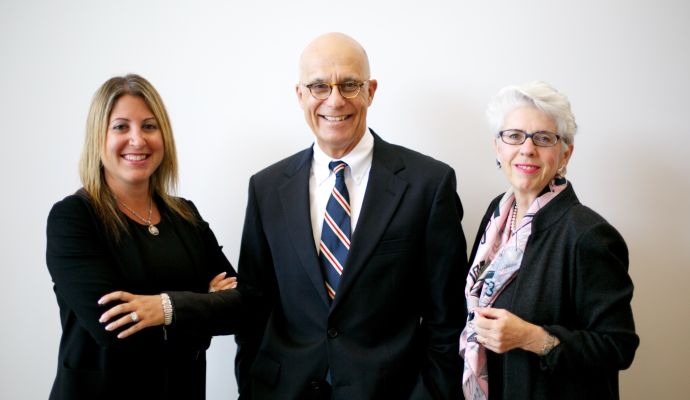Appeals: The “Uphill” Quest for Justice
Previously Published in the July/August 2021 issue of The Pennsylvania Lawyer Magazine
The purpose of litigation is to correct a wrong; in other words, to attain justice:
Law . . . must be judged by the results it achieves, not by the niceties of its internal structure; it must be valued by the extent to which it meets its end, not by the beauty of its logical processes or the strictness with which its rules proceed from the dogmas it takes for its foundation.
If justice is not attained at the trial level, or if, as sometimes occurs, the litigation at the trial level results in greater injustice, there is the option of appeal.
Appeal is usually as an “up-hill” process. This is due, principally, to something understandable, at least generally: the deference accorded to the trial court decision. After all, not only has a (trial) court already decided the matter, but also such decision is the result of consideration, applied over a period of time, with effort exerted by all concerned, including, of course, the trial court.
Therefore, the main task of an appeal is to demonstrate that something “went wrong.” And such demonstration occurs, primarily and principally, of course, in the (appellate) brief.
Appellate courts consider a lot of cases and so they receive a lot of briefs. Indeed, in each appeal the appellate court must usually review three briefs: the brief for appellant(s), the brief for appellee(s), and the reply brief for appellant(s). That is a lot to read and digest. Therefore, at least two things are important: (1) that the injustice be highlighted and (2) that the highlighting occur in the portions of the brief that can be reviewed quickly.
Such portions are (1) the statement of the question(s) involved and (2) the summary of the argument.
The statement of the question(s) involved should be the appeal’s encapsulation: the question(s) should inform the appellate court, precisely, of what the appellate court is being asked to decide.
Also, each question should be framed so that its answer can only be the answer desired.
In short, the question(s) should propel the appeal in the desired direction.
Further, the more concise the question(s), the better. The importance of conciseness is indicated in the rules, which state: “The statement of the questions involved must state concisely the issues to be resolved, expressed in the terms and circumstances of the case but without unnecessary detail.” Pa. R. App. P. 2116(a) (italics added).
The second place the injustice must be highlighted is in the summary of the argument. Such summary should be a tight explanation of the error below and, at the same time, of the necessity of “correction.”
Here too, the rules note the importance of conciseness: “The appellate courts strongly disfavor a summary that is not concise.” Pa. R. App. P. 2118, Note (italics added). “[The] summary of the argument . . . must contain a succinct, clear, and accurate statement of the arguments made in the body of the brief . . . . ” Fed. R. App. P. 28(a)(7) (italics added).
Of course, if the appellate court wants to know what happened in a case, it refers to the statement of facts. While such statement might not be the first portion of the brief the appellate court reads, it still should not be viewed as secondary mainly because the facts are always unique: what happened in a particular case happened for the first time. Even in the unusual case in which the facts are similar to those in a prior case, thereby, arguably, making the more recent case “on all fours” with the prior case, there is always some difference. And some difference “can make all the difference.”
Because the case’s facts are unique, they present a situation the appellate court has never encountered. In short, the facts can be interesting, especially to an appellate court, simply because they are new.
Therefore, such newness should be presented in such a way that if the appellate court were to read the statement of facts alone, the appellate court would come away urged to render justice.
Highlighting injustice might not seem, at least at first, so insightful, but its accomplishment can be challenging.
Highlighting injustice begins, of course, with identifying the issue(s) because, after all, it is the issue(s) from which everything in the brief ensues.
The lawyer at the trial level might consider identification of the issue(s) the “easiest” part of the appeal, due to such lawyer’s belief that such lawyer knows the case best.
But, ironically, on appeal, such knowledge can be a disadvantage, because the case the trial lawyer “knows” is the case that (unfortunately) lost.
In other words, because the approach taken at the trial level did not work, the appeal usually calls for a new approach.
Arriving at a new approach can be difficult for trial lawyers due to their tendency, albeit understandable, to be wedded to their original theories. And an appeal is not “another bite of the apple”; it is not reprising an approach, at the appellate level, that did not work at the trial level, with the hope that, at the appellate level, the injustice will be better perceived or better understood.
Appeal calls for looking at a case afresh.
In short, appeal calls for looking at a case afresh. It calls for acknowledging the trial court decision, which, as stated, will be accorded deference, while, at the same time, demonstrating such decision is misplaced.
Looking at a case afresh can be accomplished by a lawyer uninvolved with the trial, which can be a lawyer in the trial lawyer’s firm or even a colleague in another firm. Thus, the process can at least begin by obtaining a reaction from a lawyer whose opinion is respected and who is learning of the case for the first time. In sum, the more objectivity, the better.
An example of objectivity’s advantage is a case with which the author is familiar: After trial, the jury awarded compensatory and punitive damages. But the trial lawyer missed that the trial court not only did not make a required determination of law, but also, that the trial court had such (legal) determination made (instead) by the jury. Because the trial court lacked subject matter jurisdiction for such action, its judgment (on the jury’s verdict) was void. None of this was raised during the trial court proceedings (and it could not be waived because it concerned subject matter jurisdiction).
Arriving at an appeal’s approach, while necessary, is still preliminary. What remains is the appellate process itself, which is governed by rules that are extensive.
And the heart of the appeal, writing the appellate brief, requires a thorough knowledge of the record.
Therefore, unfamiliarity with the appellate rules and/or the record can be detrimental.
Thus, the appellate process necessitates: compliance with extensive rules; thorough review of the record; and identification of the determinative issue(s)—all culminating in a brief that calls for correcting an injustice.
There are times, of course, when the injustice is not readily apparent. Recognizing this, at the outset, before undertaking an appeal is important not only because, as stated, appeal is an “up-hill” process, but also because appeal almost always entails considerable time, effort, and expense.
About Anthony J. Vetrano
Anthony Vetrano, Esq. is a partner in the firm and a former Chair of the Montgomery County Bar Association Appellate Court Practice Committee. He has been an appellate lawyer for 30 years and focuses primarily on civil appeals and retirement benefits. In addition, Mr. Vetrano has lectured in programs sponsored by the Pennsylvania Bar Association, Pennsylvania Bar Institute, American Bar Association, and Inns of Court.
About Vetrano | Vetrano & Feinman LLC
Vetrano | Vetrano & Feinman LLC family attorneys provide skilled divorce and family law services to residents in the Main Line Philadelphia area. The firm’s lawyers have a great deal of skill and experience in family law matters and work diligently to achieve the best results possible for each client and family. They hold the philosophy that family lawyers must understand the needs of each family member in order to create a healthy family environment after a divorce, and recommend courses of action that are most appropriate for each individual case.
For more information about Vetrano | Vetrano & Feinman LLC’s family attorneys in Main Line, PA, please visit www.vetranolaw.com or call (610) 265-4441.

Need to Talk to Us?
Our experienced family lawyers take the time to fully understand the financial and emotional complexities that can be involved in separating two lives. We offer the patience and resources to effectively guide clients through a divorce, addressing all the challenges they may face in moving forward with their lives. To learn more about how we can help protect your rights and interests in a complex divorce, contact the Pennsylvania divorce attorneys at Vetrano | Vetrano & Feinman LLC.
